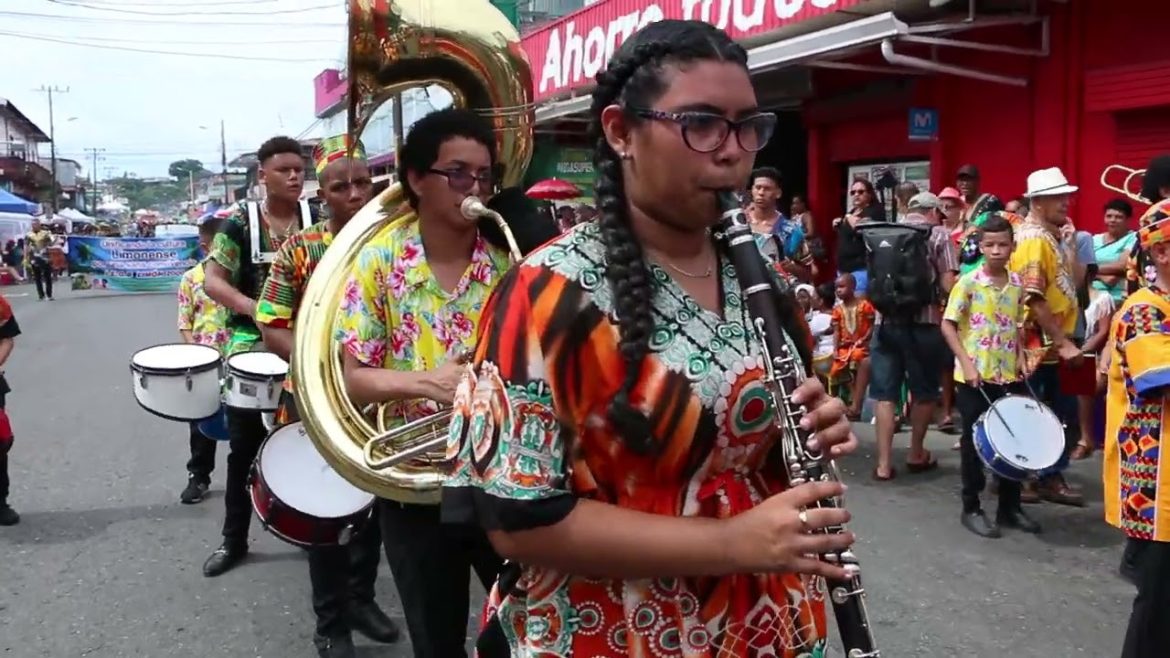A Celebration of Identity and Heritage
Costa Rica is a country rich in cultural diversity, but few events capture the essence of its multicultural tapestry quite like Limón’s Gala Grand Parade. This annual celebration is not just a parade; it’s a vivid expression of Afro-Costa Rican culture, a dynamic and vibrant community that has played a crucial role in shaping the nation’s identity. The streets of Limón come alive with color, music, and dance, showcasing the traditions and pride of the Afro-Costa Rican people in a way that is both joyful and deeply meaningful.
The Roots of Afro-Costa Rican Culture
Before diving into the festivities of the Gala Grand Parade, it’s important to understand the roots of Afro-Costa Rican culture. The history of the Afro-Costa Rican community is one of resilience and perseverance. It dates back to the late 19th and early 20th centuries when people of African descent from the Caribbean islands, primarily Jamaica, came to Costa Rica to work on the construction of the railroad connecting the Central Valley to the Caribbean coast. Many of these workers settled in Limón, bringing with them their rich cultural traditions, language, and religious practices.
Over the decades, the Afro-Costa Rican community has maintained its unique cultural identity, even as it integrated into the broader Costa Rican society. The Gala Grand Parade in Limón is a powerful celebration of this identity, a day when the community proudly showcases its heritage through music, dance, and art.
The Gala Grand Parade: A Festival of Pride and Tradition
The Gala Grand Parade is the highlight of Limón’s annual carnival celebrations, a vibrant event that draws visitors from all over Costa Rica and beyond. The parade is a showcase of Afro-Costa Rican culture in its most dynamic form. It’s a day when the streets of Limón are filled with the sounds of calypso, reggae, and soca, and the air is thick with the scent of delicious Caribbean cuisine.
Participants in the parade dress in traditional Afro-Caribbean attire, with brightly colored costumes adorned with feathers, beads, and sequins. The women often wear headwraps and flowing skirts, while the men don dazzling outfits that reflect the energy and spirit of the occasion. The parade route is lined with spectators, who come to enjoy the spectacle and immerse themselves in the infectious rhythms of the music.
Music and Dance: The Soul of the Parade
Music and dance are at the heart of the Gala Grand Parade. Calypso, with its upbeat tempo and catchy melodies, is a central feature of the celebration. This genre, which originated in Trinidad and Tobago, has been embraced by the Afro-Costa Rican community and is a key element of the parade’s musical lineup. Bands playing steel drums, guitars, and maracas lead the procession, encouraging spectators to dance along.
Reggae, another musical genre with deep roots in Afro-Caribbean culture, also plays a prominent role in the parade. The beats of reggae music, combined with the soulful lyrics, create an atmosphere of unity and celebration. It’s impossible to stand still when the reggae rhythms start to flow, and the parade becomes a massive dance party that stretches for blocks.
But it’s not just about the music. The dancers, who are often the stars of the show, bring the parade to life with their energetic and expressive movements. Each step and twirl is a celebration of freedom, resilience, and joy. The choreography often tells stories of the Afro-Costa Rican experience, blending traditional African dance forms with Caribbean influences.
Culinary Delights: A Taste of the Caribbean
No cultural celebration would be complete without food, and the Gala Grand Parade does not disappoint. The streets of Limón are lined with food stalls offering a wide range of Afro-Caribbean delicacies. From spicy jerk chicken to rice and beans cooked in coconut milk, the flavors are bold and delicious. Freshly grilled seafood, fried plantains, and sweet treats like coconut bread and patí (a savory pastry filled with spiced meat) are also popular choices.
These dishes are more than just food; they are a connection to the past, a way for the Afro-Costa Rican community to preserve and share their culinary traditions. The aromas wafting through the parade route draw in visitors, who are eager to sample the rich flavors of the Caribbean. Eating together at the parade becomes an experience of communal joy, as people share not just food, but stories and laughter.
The Importance of the Gala Grand Parade
The Gala Grand Parade is more than just a festival; it’s a powerful expression of Afro-Costa Rican pride and resilience. In a country where the contributions of the Afro-Costa Rican community have not always been fully recognized, this event is a statement of identity and a reminder of the rich cultural diversity that makes Costa Rica unique.
For the people of Limón, the parade is a time to come together and celebrate their heritage. It’s a moment to honor their ancestors, who brought with them the traditions that continue to thrive today. It’s also an opportunity to educate others about Afro-Costa Rican culture and to foster greater understanding and appreciation among the broader population.
A Celebration of Life and Culture
Limón’s Gala Grand Parade is a vibrant, joyful celebration that showcases the heart and soul of Afro-Costa Rican culture. From the rhythmic beats of calypso and reggae to the colorful costumes and mouth-watering food, every aspect of the parade is a testament to the rich heritage of the Afro-Costa Rican community. It’s a day when the streets of Limón come alive with music, dance, and laughter, as people from all walks of life come together to celebrate their shared humanity.
If you ever find yourself in Costa Rica during the carnival season, make your way to Limón and experience the Gala Grand Parade for yourself. It’s an unforgettable celebration of culture, pride, and the indomitable spirit of the Afro-Costa Rican people.

